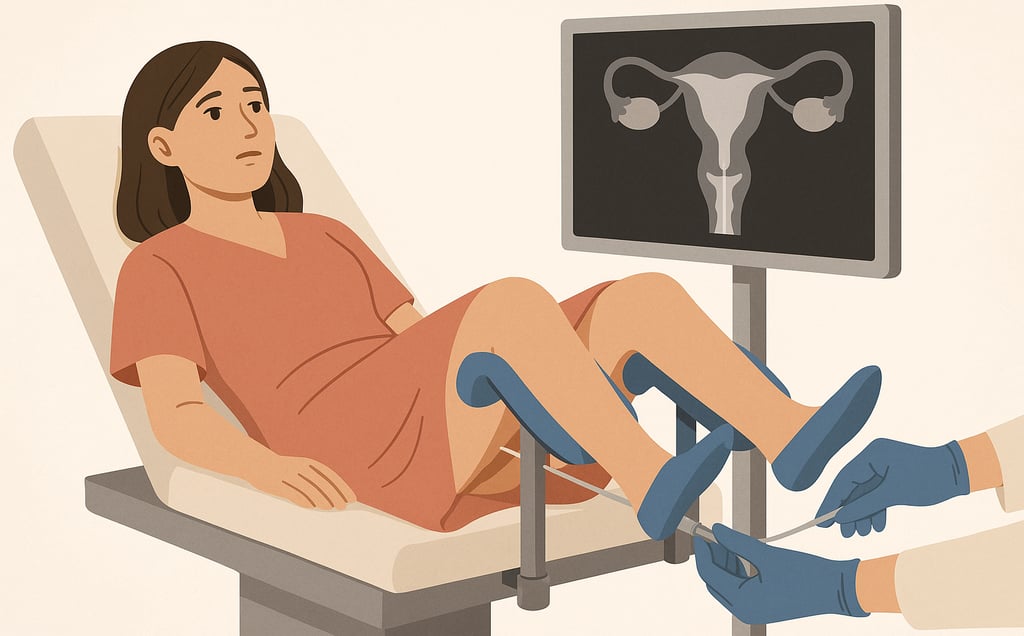The HSG Test: What It Is and What It Feels Like
Wondering what the HSG test is like? This guide explains what it checks for, how it feels, and what to expect before, during, and after the procedure.
DIAGNOSIS & TESTING
6/27/20252 min read


If you're starting fertility investigations, your doctor might recommend an HSG test—short for hysterosalpingogram. The name might sound intimidating, but the test itself is quick, and the insights it provides can be crucial.
In this post, we’ll break down what the HSG test is, what it checks for, how to prepare, what it feels like, and what your results could mean for your IVF journey.
What Is an HSG Test?
The HSG (hysterosalpingogram) is a specialised X-ray used to assess your uterus and fallopian tubes. It's a key tool in fertility testing, often used early in the diagnostic process.
The HSG checks:
If your fallopian tubes are open or blocked
The shape and size of your uterus
Any structural abnormalities (like fibroids, polyps, or adhesions) that could affect conception or implantation
When and Where Is It Done?
Usually performed between day 7–10 of your menstrual cycle (after bleeding, before ovulation)
Conducted in a hospital or fertility clinic's radiology/imaging department
The entire appointment typically lasts 15–30 minutes
What Happens During the HSG Procedure?
You lie on a table like during a smear test.
A speculum is inserted into the vagina to access the cervix.
A small catheter is inserted through the cervix and into the uterus.
A contrast dye is gently injected through the catheter.
As the dye travels into your uterus and fallopian tubes, X-ray images are taken.
The dye helps to visualise whether your tubes are open and if your uterus is a normal shape.
📸 The radiologist will watch the dye flow in real time on a screen, and you’ll likely get a copy of the report or images afterwards.
What Does It Feel Like?
This is one of the most common questions. The experience can vary from person to person, but here’s what to expect:
Mild discomfort: Similar to period cramps or a Pap smear
Cramping: Some people feel more intense, short-lived cramps as the dye enters the uterus and tubes
Stinging or pressure: When the catheter is inserted
After-effects: Mild spotting or cramping for a few hours after the test
💡 Many people find the anticipation worse than the actual procedure.
How to Prepare for an HSG
Take ibuprofen or paracetamol about an hour before the test (check with your doctor first)
Bring a sanitary pad for after, as the dye may leak
You may be asked to take antibiotics beforehand to reduce infection risk
Some clinics recommend a pregnancy test beforehand to ensure you're not pregnant
What Do HSG Results Mean?
You’ll usually get your results shortly after the test or within a few days.
Possible outcomes:
Both tubes open: A reassuring sign; natural conception is more likely
One tube blocked: May still conceive naturally, but IVF might be considered
Both tubes blocked: IVF or surgical intervention may be needed
Uterine abnormalities: May require further investigation or treatment
Your fertility consultant will explain how the results fit into your broader fertility plan.
Does the HSG Help Fertility?
Interestingly, some people get pregnant naturally shortly after an HSG test. This is sometimes referred to as the "HSG flush effect." The dye might clear minor blockages or improve the uterine environment slightly.
While it’s not a treatment, this phenomenon is real enough that some doctors mention it as a possible perk.
Personal Tips & Reassurance
The test is over quickly—usually under 10 minutes of actual procedure time
Bring someone with you if you’re nervous, even just for moral support
Most people go back to work or their day afterwards
If you feel lightheaded, crampy, or emotional, give yourself permission to rest
© 2025. All rights reserved.
